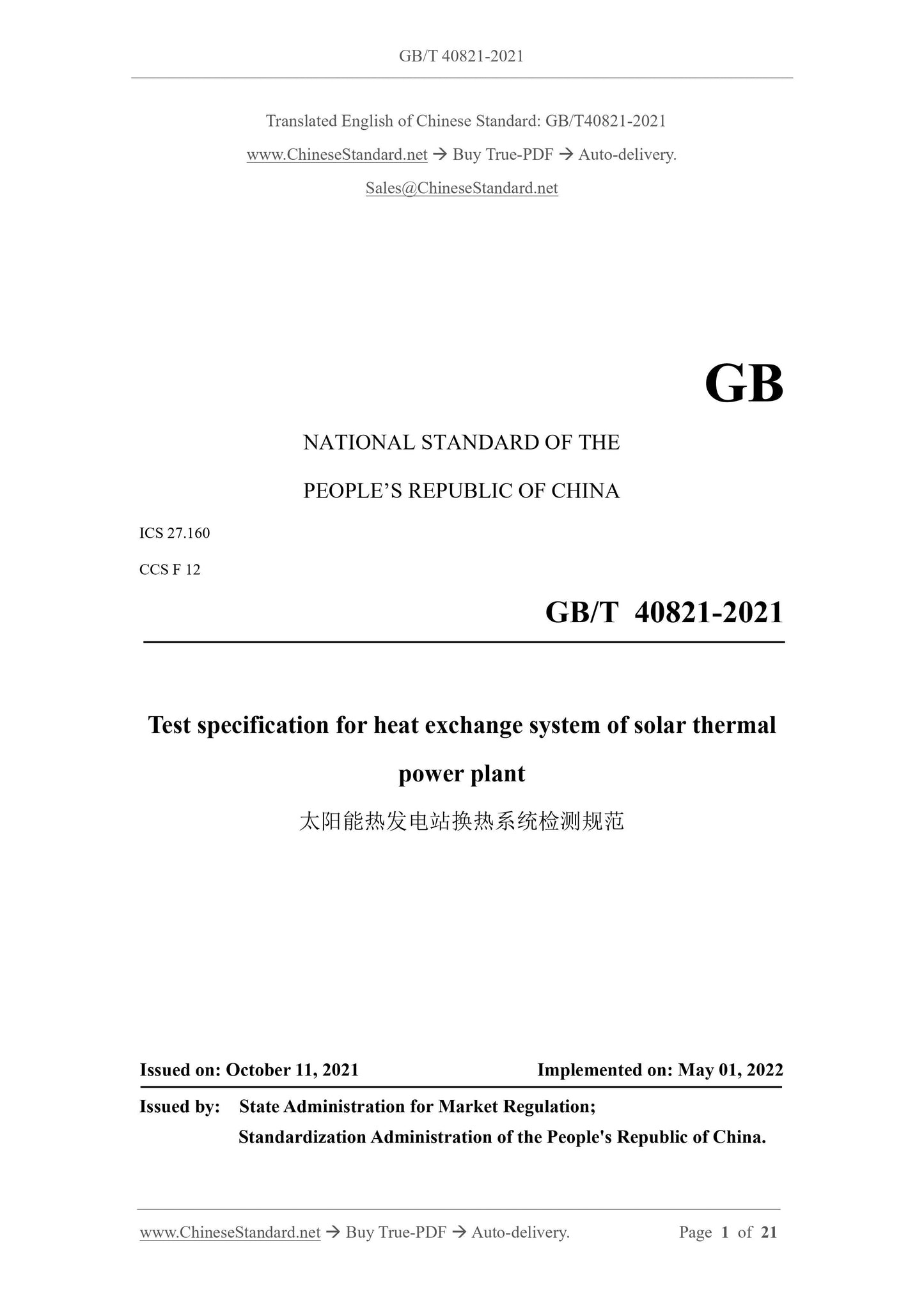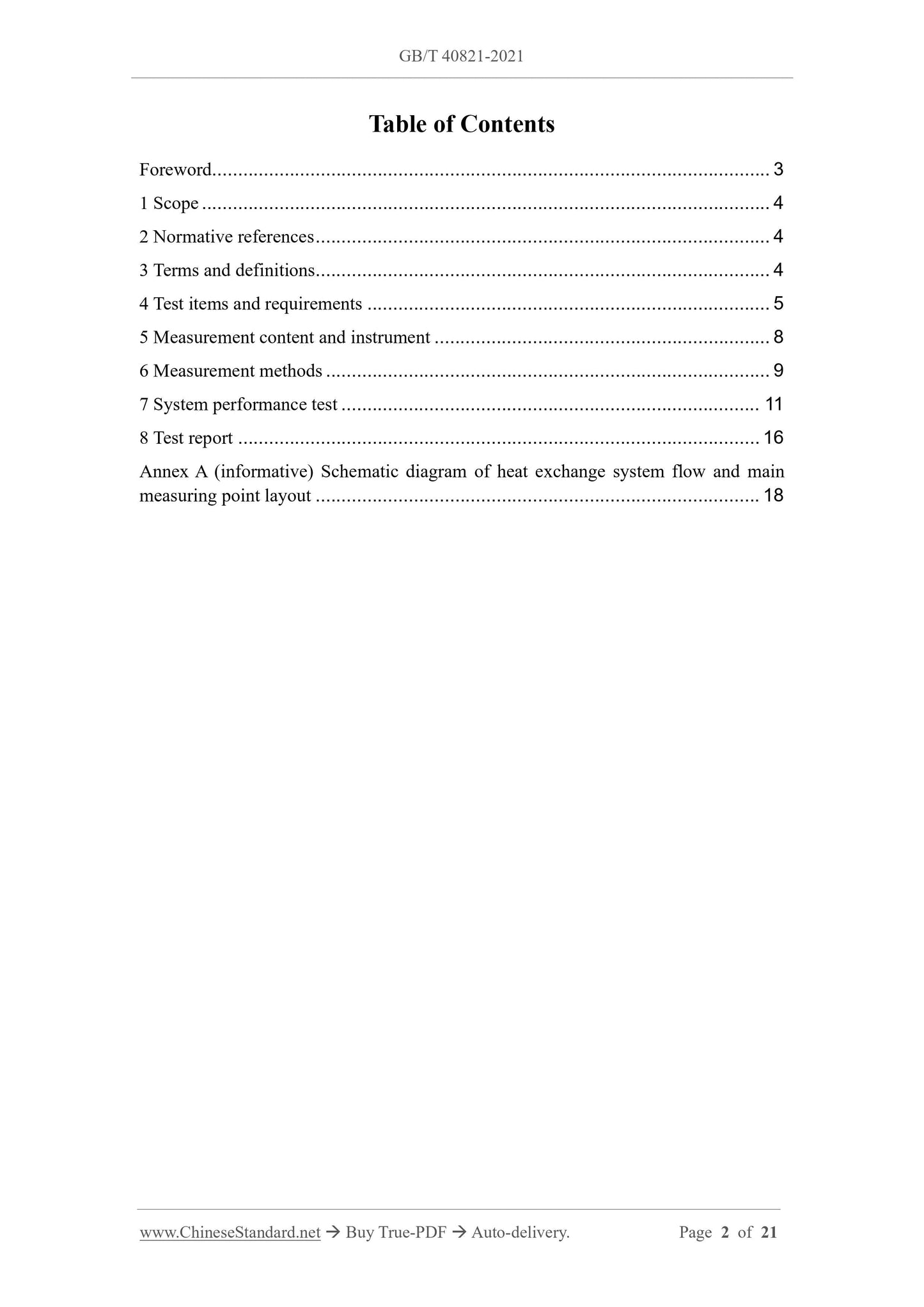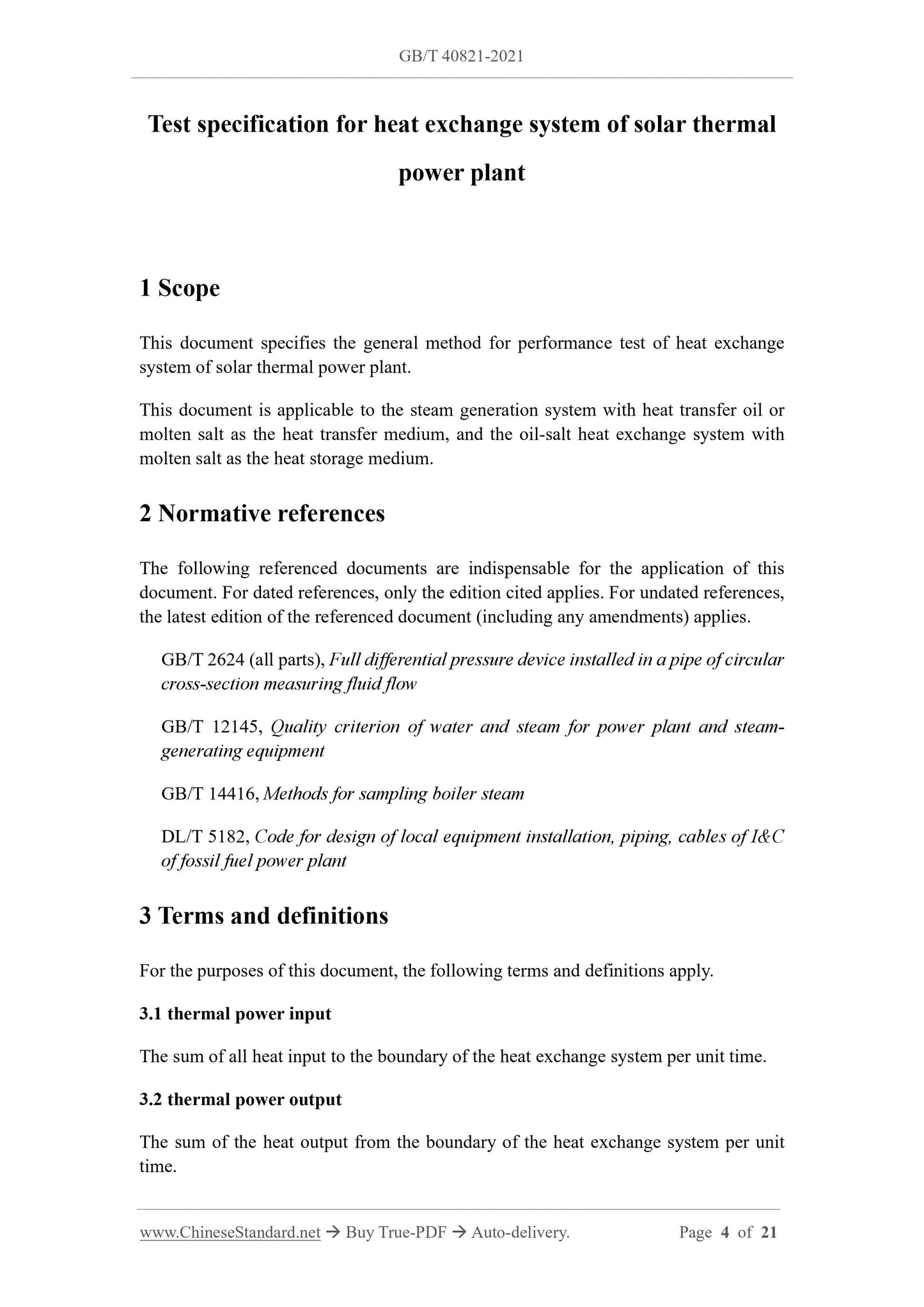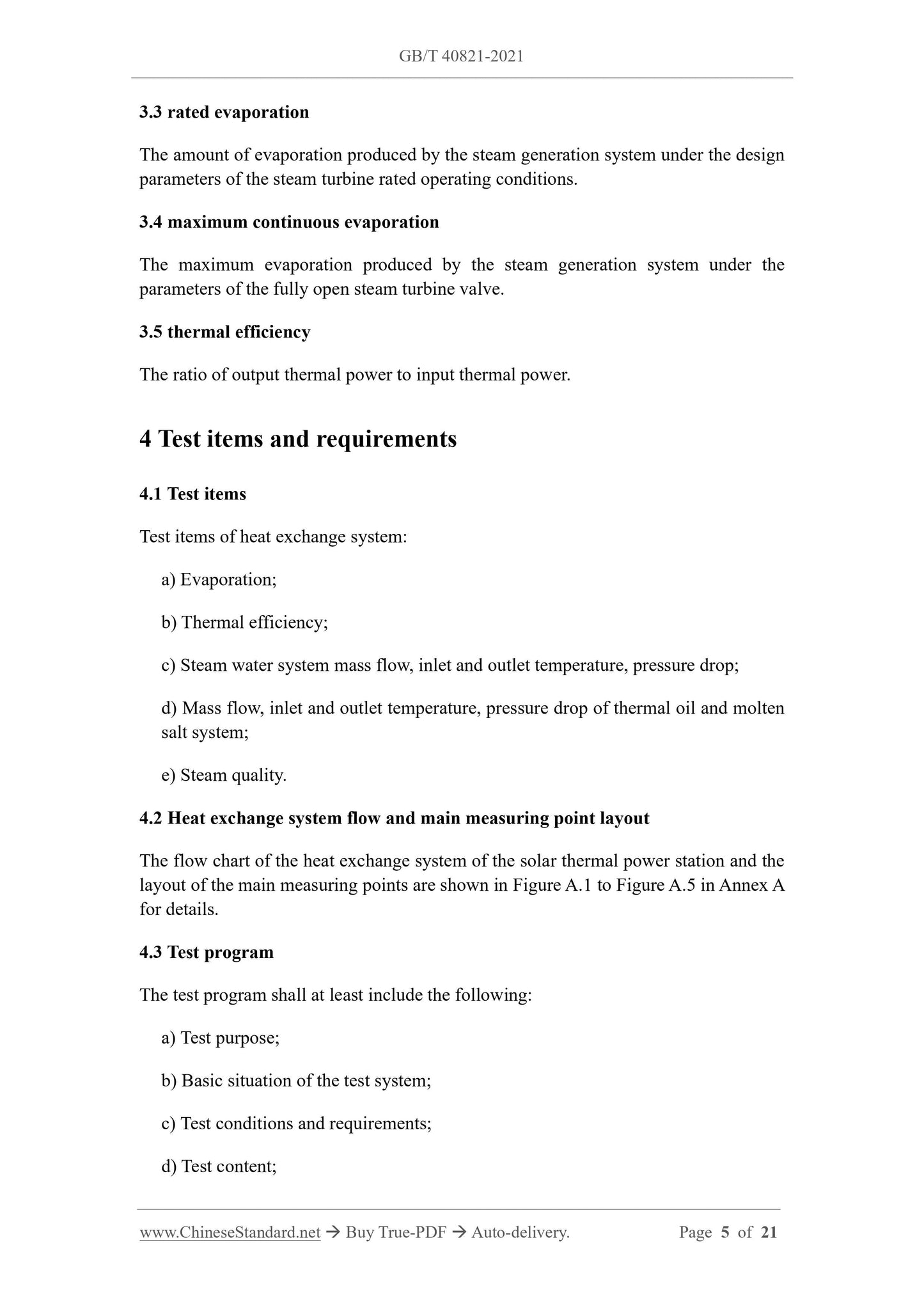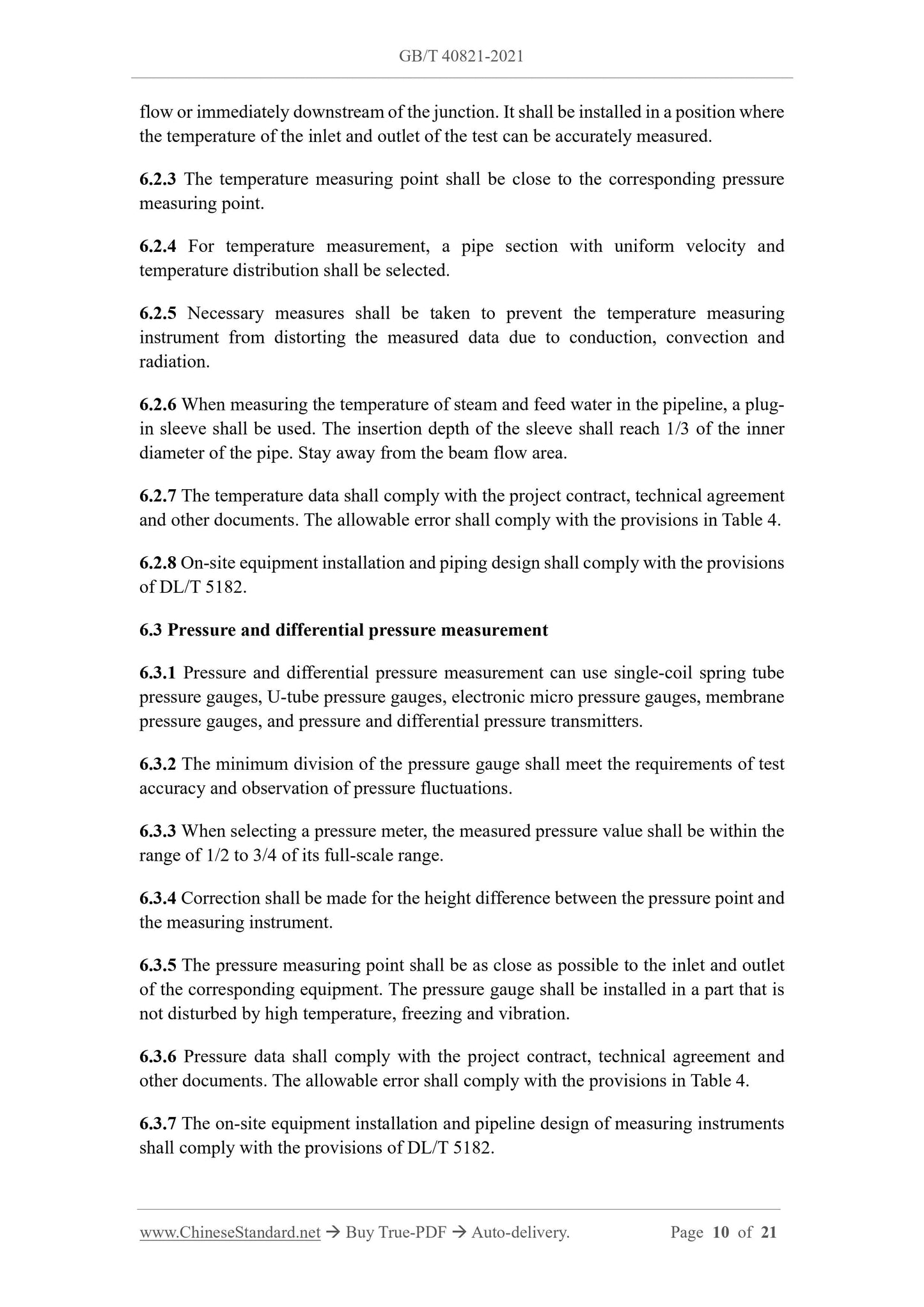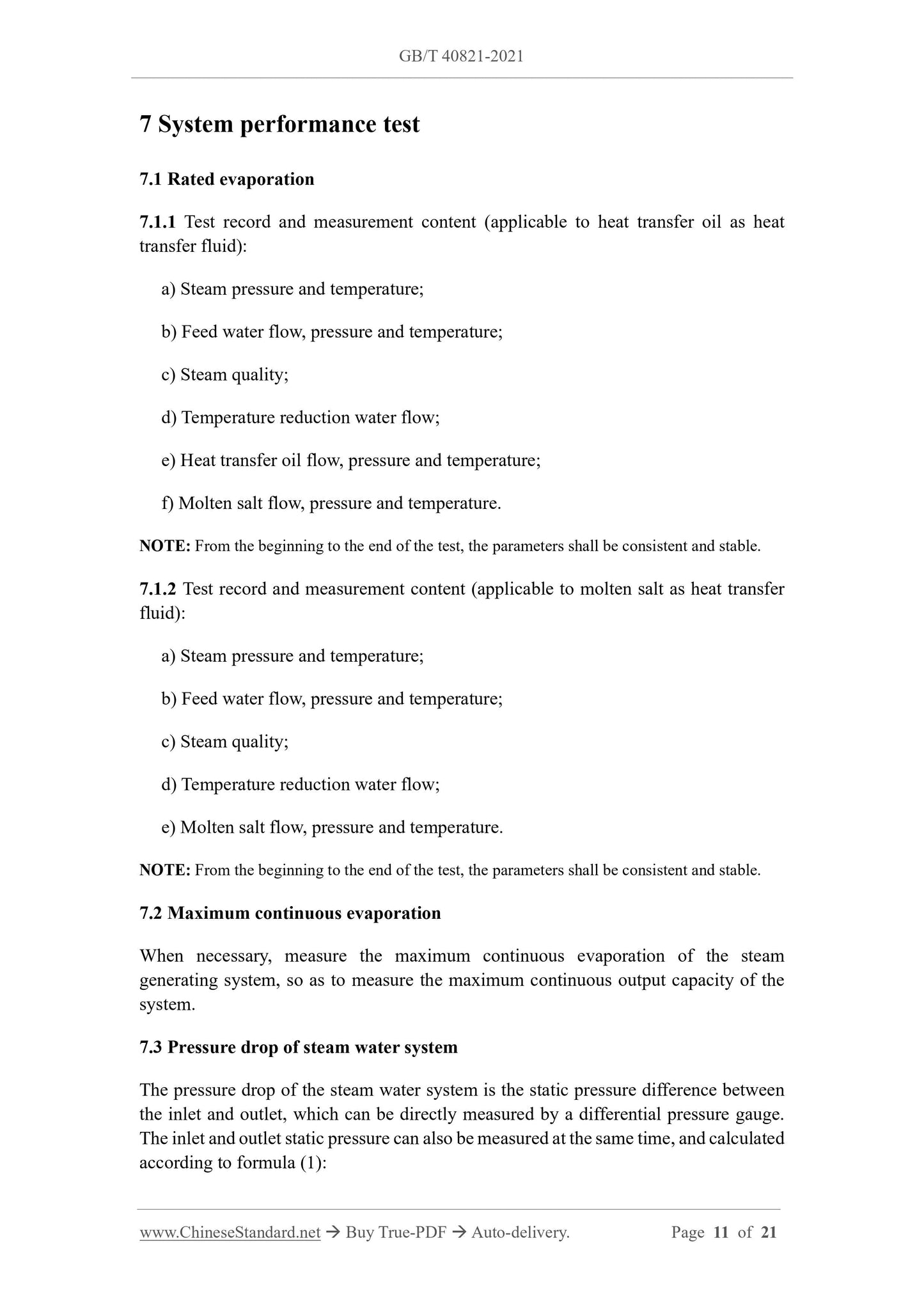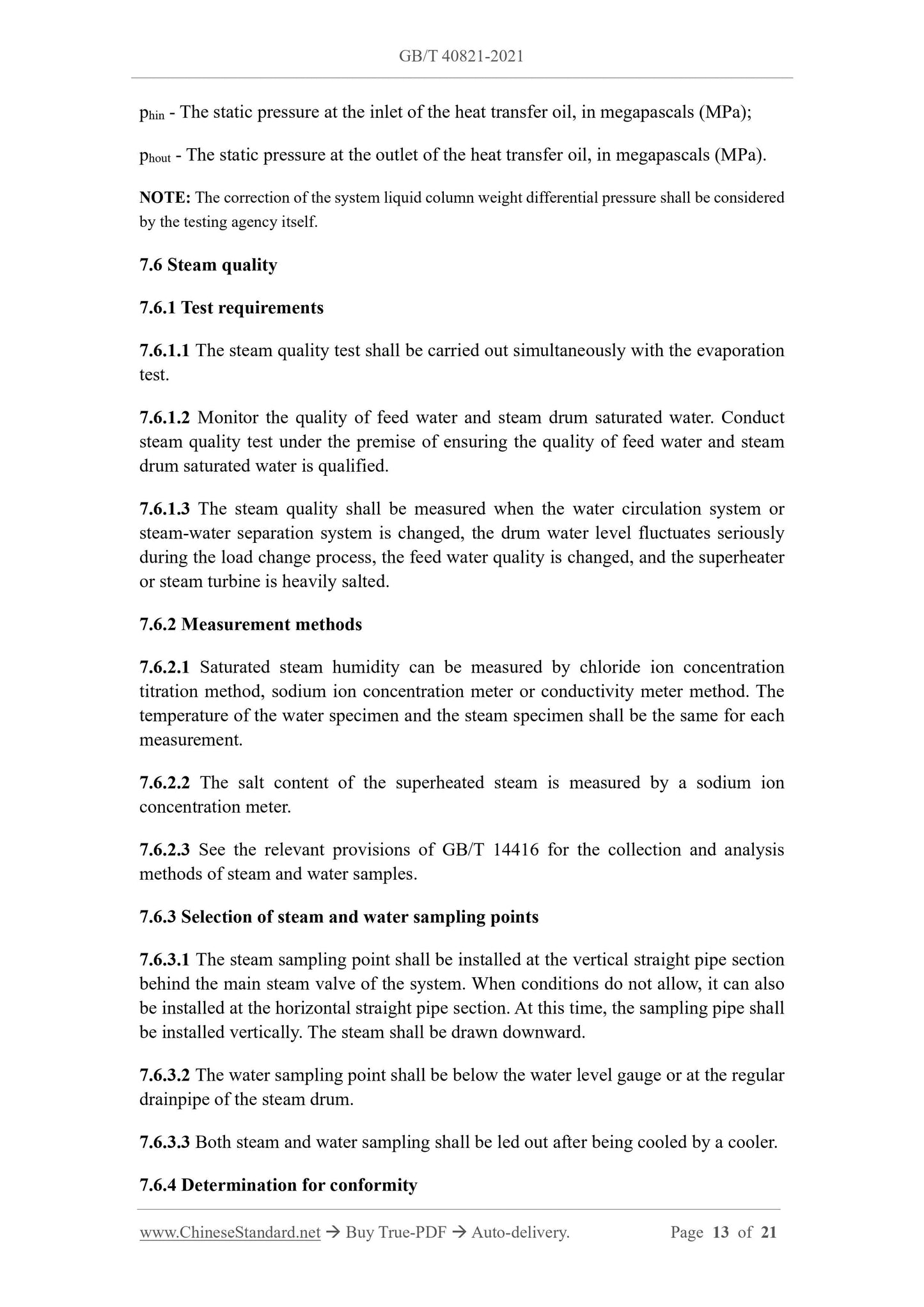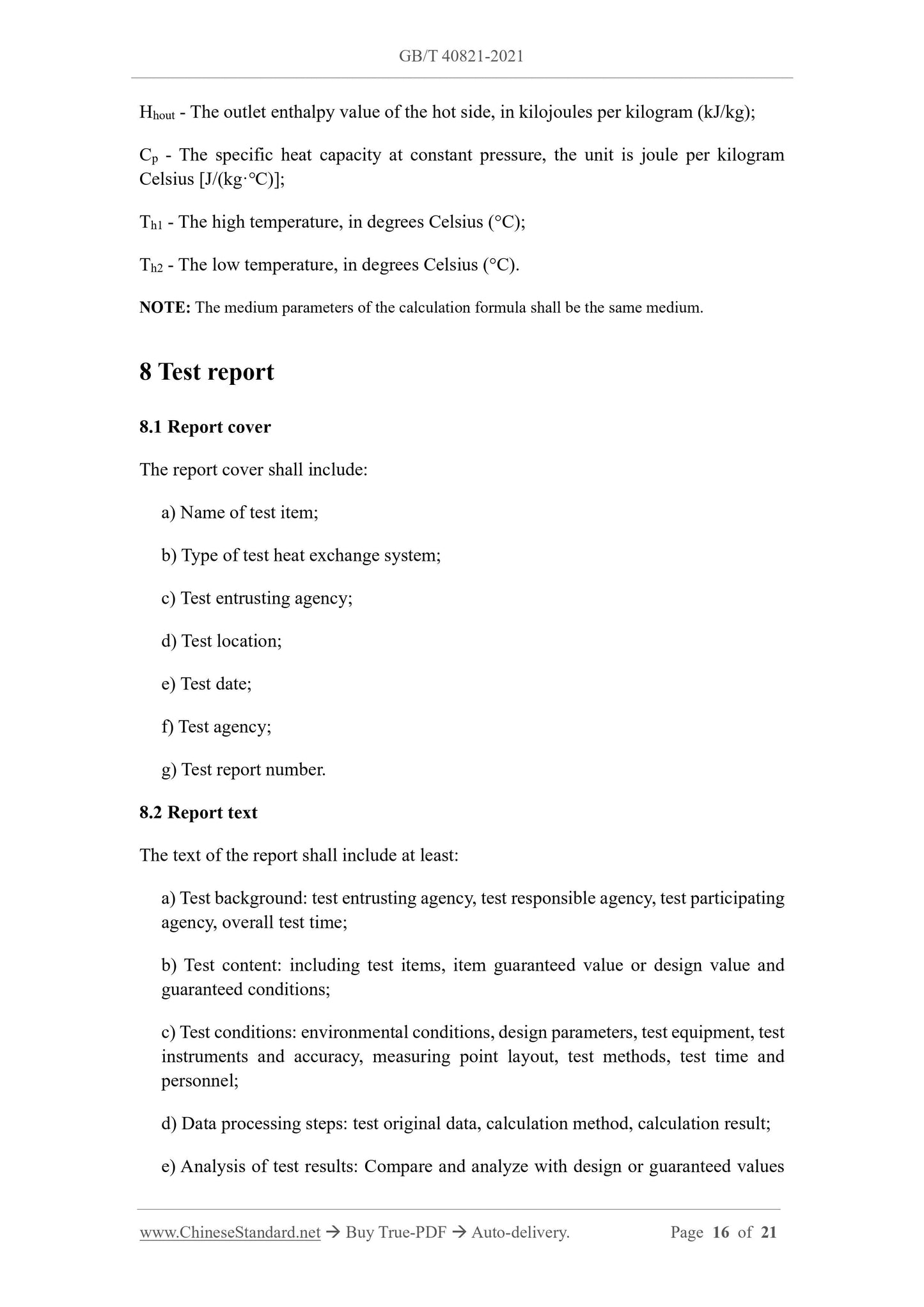1
/
of
8
www.ChineseStandard.us -- Field Test Asia Pte. Ltd.
GB/T 40821-2021 English PDF (GB/T40821-2021)
GB/T 40821-2021 English PDF (GB/T40821-2021)
Regular price
$290.00
Regular price
Sale price
$290.00
Unit price
/
per
Shipping calculated at checkout.
Couldn't load pickup availability
GB/T 40821-2021: Test specification for heat exchange system of solar thermal power plant
Delivery: 9 seconds. Download (and Email) true-PDF + Invoice.Get Quotation: Click GB/T 40821-2021 (Self-service in 1-minute)
Newer / historical versions: GB/T 40821-2021
Preview True-PDF
Scope
This document specifies the general method for performance test of heat exchangesystem of solar thermal power plant.
This document is applicable to the steam generation system with heat transfer oil or
molten salt as the heat transfer medium, and the oil-salt heat exchange system with
molten salt as the heat storage medium.
Basic Data
| Standard ID | GB/T 40821-2021 (GB/T40821-2021) |
| Description (Translated English) | Test specification for heat exchange system of solar thermal power plant |
| Sector / Industry | National Standard (Recommended) |
| Classification of Chinese Standard | F12 |
| Word Count Estimation | 17,189 |
| Issuing agency(ies) | State Administration for Market Regulation, China National Standardization Administration |
Share
